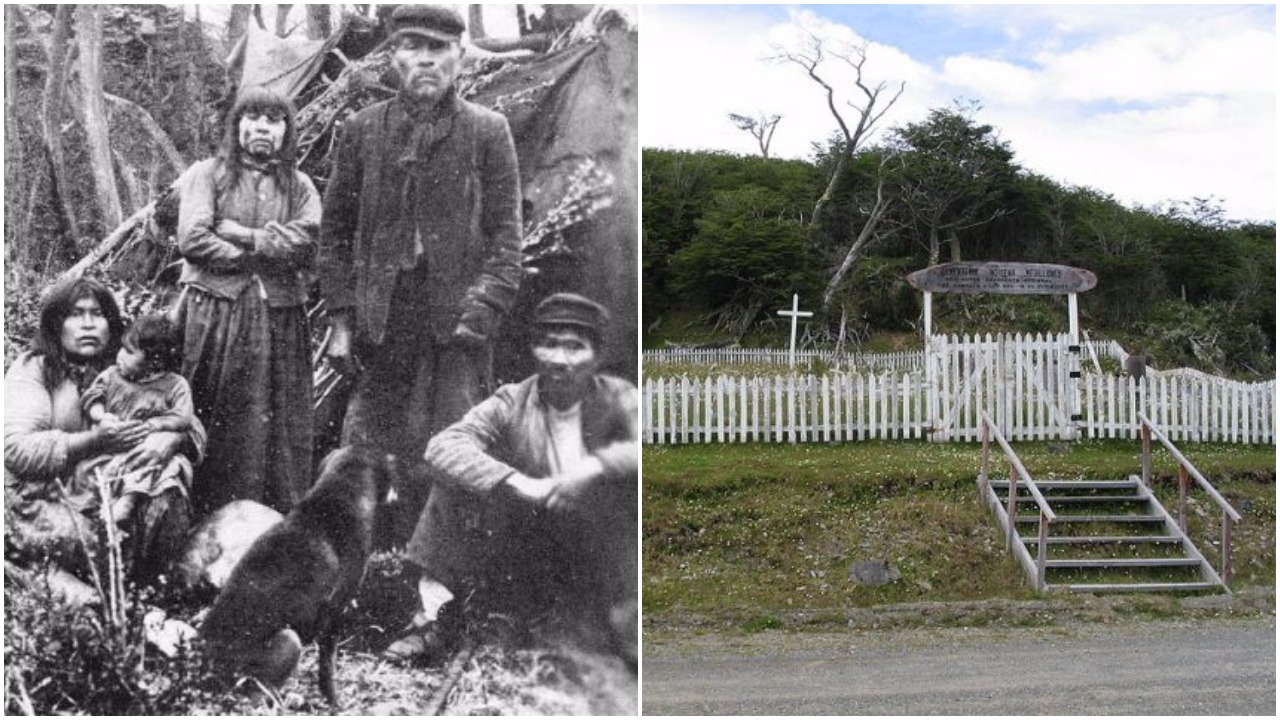The Yaghan people from Tierra del Fuego

Every few years we hear about a new tribe or a group of people being discovered and the world gets excited. In this article we’re looking at the Yaghan people who were first contacted in the 16th century although it wasn’t until the mid 19th century that Europeans had more regular contact with the people.
The Yaghan people from Tierra del Fuego were of unknown origins and had an unusual adaptation to the cold unlike any other human in the world. The Yaghan also called Yahgan, Yagán, Yámana, Tequenica, or Fuegians by the Europeans, are considered as the southernmost peoples in the world. They have been living on the islands south of Isla Grande de Tierra del Fuego all the way to Cape Horn for more than 10,000 years.
Unfortunately, there are sources which claim that as of 2012, Cristina Calderón is the only full-blooded Fuegian alive, while a few thousand people only have origins descending from the Yaghan people. Calderón is the last remaining native speaker of the Yaghan language which is an isolate language.


The Yaghan people have been memorized in Darwin’s diary as the most exceptional human examples who have adapted to the cold climate of the Southern winters in Terra del Fuego. Regardless of the temperature, these peoples’ clothing was minimal. Not like clothing for an average temperature, but rather like that for a tropic climate. If you wonder what happened to all these people when they were discovered in the 1800s so that today there is only one full-blooded Yaghan living, well the answer is – other people.

When they became Fuegians, their lives got disturbed by the curious European explorers. Most of them probably caught diseases to which they weren’t immune while the others got simply assimilated with the newcomers and mixed with them. Darwin’s writings are the most original ones about culture now long gone. Hence, his writings about Tierra del Fuego are the most valuable. Even though the Yahgan impressed anyone who encountered them, including Ferdinand Magellan, James Cook, Francis Drake, and James Weddell, Darwin described an undisturbed example of society, and probably he was the last one to do so.



So, the people that were called Fuegians by the Europeans included several cultures and languages that weren’t much alike. There were Yaghan (Yámana), Hauch (Manek’enk), Alacaluf (Kawésqar), and Ona (Selk’nam). All of these tribes were nomadic hunter-gatherers. The men usually sailed into the deep waters in canoes and hunted sea lions, and the women dived the cold waters to collect shellfish.
Yes, the Yaghan people seemed completely comfortable to move almost naked and to swim in the cold waters of the ocean where an average human would freeze. When they could light small fires, The Fuegians kept warm by huddling around. They were also lighting fires in their boats to stay warm. There is a theory that the name of “Tierra del Fuego,” meaning “Land of Fire” has been given by the European explorers who were attracted by the many fires lighten.


The Yaghan also knew how to use the many rock formations to shelter themselves from the elements. When needed, they covered themselves in animal grease. The natural resting position of the Yaghan was a deep squatting one which conserves the heat of the body and also reduced their surface area. In the end, they simply evolved much stronger metabolisms than average humans that allowed them to generate more internal body heat.


Thomas Bridges, an Anglican missionary and a linguist, traveled on a mission to the Tierra del Fuego in 1871 where he later brought his wife and together they raised their family there. He started learning the Yaghan language when he was only 17, and after ten years he completed a grammar and a 30,000-word dictionary of Yaghan-English.


One of his sons, Lucas Bridges, was also one of the few Europeans who learned the language, and in 1948 he published a book about the history of that period which is a valuable example of the social life of the Yaghan people.
If you have any comments then please drop us a message on our Outdoor Revival Facebook page
If you have a good story to tell or blog let us know about it on our FB page, we’re also happy for article or review submissions, we’d love to hear from you.
We live in a beautiful world, get out there and enjoy it.
Outdoor Revival – Reconnecting us all with the Outdoor
